This article was medically reviewed by Mandolin S. Ziadie, MD. Dr. Ziadie is a board certified Pathologist in South Florida. She specializes in renal, transplant, and pediatric Pathology and has over 12 years of experience. She earned her medical degree from the University of Miami School of Medicine in 2004 and completed her fellowship in Pediatric Pathology at Children’s Medical Center in 2010.
There are 21 references cited in this article, which can be found at the bottom of the page.
wikiHow marks an article as reader-approved once it receives enough positive feedback. In this case, 91% of readers who voted found the article helpful, earning it our reader-approved status.
This article has been viewed 326,836 times.
When you have thrombocytopenia, your doctor will usually monitor your platelet count through regular blood tests. Fortunately, you may be able to keep your platelet count up through a combination of healthy lifestyle, diet, and medical practices.
Steps
Making Preventive Lifestyle Choices
-
1
-
2Avoid exposure to toxic chemicals. Low platelet count can be caused by exposure to toxic chemicals, such as pesticides, arsenic, or benzene, all of which slow platelet production.[4] If your job requires you to work with chemicals such as these, take the necessary safety precautions.[5]Advertisement
-
3Ask your doctor about medications you're taking. Some medications can cause a low platelet count. Even NSAIDs (nonsteroidal anti-inflammatory drugs) such as aspirin, naproxen (Aleve) and ibuprofen (Advil, Motrin) can have an effect on your platelet count.[6] NSAIDs may also thin your blood too much, which is a bigger problem if you are also having platelet issues.[7] Do not stop taking any medication you have been prescribed without talking to your doctor first.
- Blood thinners such as heparin are the most common causes of drug-induced immune thrombocytopenia. This type occurs when the medication causes your body to produce too many antibodies, which destroy your platelets.[8]
- Chemotherapy drugs and anti-seizure medications such as valproic acid may cause drug-induced non-immune thrombocytopenia. This type occurs when your medication keeps your bone marrow from producing enough platelets.[9]
- Other medications that may interfere with platelet production include: furosemide, gold, penicillin, quinidine and quinine, ranitidine, sulfonamides, linezolid, and other antibiotics.[10]
-
4Get vaccinated. Several viral diseases, such as mumps, measles, rubella, and chickenpox, can affect your platelet count.[11] [12] Getting vaccinated for these diseases can help preserve your health and avoid a low platelet count.[13]
- You should also talk with your pediatrician about vaccinating your child. Most children are healthy enough for vaccination.
Medicating Your Symptoms
-
1Visit the doctor at the onset of low platelet symptoms. A doctor will administer a Complete Blood Count (CBC), which will show the health of red blood cells, white blood cells and platelets. In order to be considered normal, platelets should be between 150,000-450,000 per microliter of blood.[14] Symptoms of a low platelet count include excessive or easy bruising, and superficial bleeding that appears as a rash on the skin. Additional warning signs include:[15]
- Bleeding that will not stop after 5 minutes of pressure
- Nose, rectum or gum bleeding
- Blood in your urine or bowel movements
- Unusually heavy menstrual flow
- Feelings of dizziness or lightheadedness
- Fatigue
- Jaundice
-
2Treat the underlying medical condition. Because many causes of low platelet count are caused by diseases or medical conditions, your doctor will prescribe the appropriate treatment route for you to treat the condition. This is more effective than merely treating the symptoms.[16]
- For example, if your low platelet count is a reaction to a medication, your doctor may prescribe a different medication to see if this helps bring up your platelet count.[17]
-
3Take prescribed medication. Your doctor may prescribe corticosteroids, such as prednisone, which help slow your body's destruction of platelets.[18] This is usually the first-choice treatment drug.[19]
- Your immune system may also be overfunctioning, and could be suppressing your platelets. In this case, your doctor may prescribe immunosuppressants.[20]
- Eltrombopag and romiplostim are medications that can help your body produce platelets.[21]
- Your doctor may also prescribe oprelvekin (brand name Neumega) or another medicine that has been approved to stimulate the production of stem cells (and thereby platelets). Many cancer patients take this drug as a preventative measure because it is easier to prevent low platelets than build them back up.
- There's a risk of side effects with this medication, so your doctor will determine whether to prescribe it based on her assessment of your risk of developing a low platelet count. The doctor will also consider whether you have any heart issues, because Neumega's side effects include fluid retention and heart palpitations, which can exacerbate heart conditions. Additional side effects can include diarrhea and other digestive issues.
Making Dietary Changes
-
1Consult with a doctor or registered dietitian. Before you make any significant changes to your diet, even if you think your changes will be healthy, you should consult with your physician or a registered dietitian.[22]
- Many health conditions and prescription medications must be taken into account when planning a diet plan, so consulting with a professional will keep you safe and healthy.
- A registered dietitian is an expert who has completed education, training, and supervision in the field of nutrition. Dietitians can help you determine a healthy diet and fitness plan that will account for any health conditions you have and medications or supplements you take.[23]
-
2Make any changes to your diet slowly. Implementing changes to what you're eating on a daily basis in a gradual fashion will help your body adjust appropriately. Sometimes altering your diet can cause unpleasant symptoms as your body adjusts to the new foods and eliminates the remnants of the old foods.[24]
- Making gradual changes will also ease any cravings you may feel for what you used to eat, such as sugary treats or salty snacks.
-
3Eat foods containing folate. Folate is a water-soluble B vitamin; folic acid and food folate are both sources of folate.[25] Folate deficiency can cause your bone marrow to have difficulty making enough platelets.[26]
- The recommended daily intake of folate varies, but adults should usually have between 400mcg and 600mcg a day. A full list of recommended daily allowances by age can be found at the National Institutes of Health website here.[27]
- Beef liver, leafy and dark green vegetables, legumes, fortified cereals, and nuts are good sources of folate.[28]
-
4Eat foods containing B12. If you don't consume enough vitamin B12, your bone marrow may have difficulty making enough platelets. Vitamin B12 is also essential to red blood cell formation.[29]
- The recommended daily intake of B12 varies, but adults should usually have between 2.4mcg and 2.8mcg daily. A full list of recommended daily allowances by age can be found at the National Institutes of Health website here.
- B12 is commonly found in animal products, so vegetarians and vegans may need a supplement. Good dietary sources of B12 include shellfish, beef liver, fish, fortified cereals, and dairy products.[30]
-
5Eat probiotics. Foods containing probiotics, such as yogurt and fermented foods, may help improve the immune system.[31] Probiotic bacteria may also help regulate the immune system, which may help people with autoimmune disorders (a common cause of low platelet count).[32]
- Good sources of probiotics include yogurt with live cultures, kefir (fermented milk), kimchi (Korean fermented vegetables), and fermented soy products such as tempeh, miso, and natto.[33]
-
6Eat a balanced diet of fresh food. Eat a wide variety of foods, particularly different fruits and vegetables. Eating widely will help your body get all of the nutrients it needs. In addition, try to eat locally; buy produce when it's in season in your local area. Not only will you be getting the freshest produce, but there's also less chance it has any additives or pesticides in order to keep it fresh for transport across long distances.[34]
- Visit the grocery store often to shop for fresh produce because the nutrient content decreases with time. Instead of doing all of your shopping on one day, plan to go to the store a few times per week.
- Always choose fresh varieties over frozen and canned foods. For example, if you have the choice between fresh corn on the cob and canned corn, go for the fresh.
-
7Eliminate processed and sugary foods. Replace these foods with whole, unprocessed food. For example, eat whole grain cereals, brown rice, and whole wheat products. Again, read the labels of products as you shop. Reduce the amount of white flour, white rice and processed foods you consume because these have been and "refined", or stripped of their nutrient-rich coating.
- Be sure as well to reduce the amount of white sugar you consume, as well as other sweeteners, such as fructose, corn syrup and honey. Cut back as well on fruits with lots of sugar, including mangoes, cherries, and grapes, as well as sugary fruit juices.[35] Sugar can contribute to promoting high levels of acidity in the body.
Warnings
- Go to the doctor immediately if you see small red or purple dots on your legs or feet. This is called petechiae and it is a minor hemorrhage that is indicative of low platelet count. Similarly, if you notice bleeding that seems like it won't let up (such as a nosebleed), then you should consult your physician. Women who are menstruating should watch out for a heavy flow that seems like it won't stop.⧼thumbs_response⧽
References
- ↑ http://www.mayoclinic.org/diseases-conditions/thrombocytopenia/basics/lifestyle-home-remedies/con-20027170
- ↑ http://www.nhlbi.nih.gov/health/health-topics/topics/thcp/prevention
- ↑ http://www.nhlbi.nih.gov/health/health-topics/topics/thcp/causes
- ↑ http://www.nhlbi.nih.gov/health/health-topics/topics/thcp/causes
- ↑ http://www.nhlbi.nih.gov/health/health-topics/topics/thcp/prevention
- ↑ http://www.nlm.nih.gov/medlineplus/ency/article/000556.htm
- ↑ http://www.nhlbi.nih.gov/health/health-topics/topics/thcp/prevention
- ↑ http://www.nlm.nih.gov/medlineplus/ency/article/000556.htm
- ↑ http://www.nlm.nih.gov/medlineplus/ency/article/000556.htm
- ↑ http://www.nlm.nih.gov/medlineplus/ency/article/000556.htm
- ↑ http://www.nhlbi.nih.gov/health/health-topics/topics/thcp/prevention
- ↑ http://www.aafp.org/afp/2012/0315/p612.html
- ↑ http://www.nhlbi.nih.gov/health/health-topics/topics/thcp/causes
- ↑ http://www.mayoclinic.org/diseases-conditions/thrombocytopenia/basics/tests-diagnosis/con-20027170
- ↑ http://www.mayoclinic.org/diseases-conditions/thrombocytopenia/basics/symptoms/con-20027170
- ↑ http://www.mayoclinic.org/diseases-conditions/thrombocytopenia/basics/treatment/con-20027170
- ↑ http://www.nhlbi.nih.gov/health/health-topics/topics/thcp/treatment
- ↑ http://www.nhlbi.nih.gov/health/health-topics/topics/thcp/treatment
- ↑ http://www.mayoclinic.org/diseases-conditions/thrombocytopenia/basics/treatment/con-20027170
- ↑ http://www.nhlbi.nih.gov/health/health-topics/topics/thcp/treatment
- ↑ http://www.nhlbi.nih.gov/health/health-topics/topics/thcp/treatment
- ↑ http://familydoctor.org/familydoctor/en/prevention-wellness/food-nutrition/weight-loss/what-you-should-know-before-you-start-a-weight-loss-plan.html
- ↑ http://www.eatrightpro.org/resources/about-us/what-is-an-rdn-and-dtr/what-is-a-registered-dietitian-nutritionist
- ↑ http://www.pdsa.org/products-a-publications/diet-a-lifestyle-info.html
- ↑ https://ods.od.nih.gov/factsheets/Folate-HealthProfessional/#h3
- ↑ https://medlineplus.gov/ency/article/000551.htm
- ↑ https://ods.od.nih.gov/factsheets/Folate-HealthProfessional/#h2
- ↑ https://ods.od.nih.gov/factsheets/Folate-HealthProfessional/#h3
- ↑ https://ods.od.nih.gov/factsheets/VitaminB12-HealthProfessional/
- ↑ https://ods.od.nih.gov/factsheets/VitaminB12-HealthProfessional/#h3
- ↑ https://ami-journals.onlinelibrary.wiley.com/doi/pdf/10.1111/j.1365-2672.2006.02963.x
- ↑ http://jn.nutrition.org/content/137/3/798S.full
- ↑ http://www.todaysdietitian.com/newarchives/100111p46.shtml
- ↑ http://www.pdsa.org/products-a-publications/diet-a-lifestyle-info.html
- ↑ http://www.womenshealthmag.com/nutrition/high-low-sugar-fruits
- ↑ http://www.nhlbi.nih.gov/health/health-topics/topics/thcp/causes
About This Article
To prevent low platelet count, start by avoiding alcoholic drinks, such as beer, wine, and hard liquor. Try to add foods like beef liver, leafy and dark green vegetables, legumes, fortified cereals, nuts, and dairy products, to your diet to ensure you consume plenty of folate and B12, which encourage platelet production. It's also helpful to reduce your intake of white sugar and other sweeteners. Toxic chemicals, like pesticides, arsenic, and benzene, can slow down platelet production, so it's important to avoid exposure to those. For tips from our Pathology co-author on prescription medications that might help, read on!







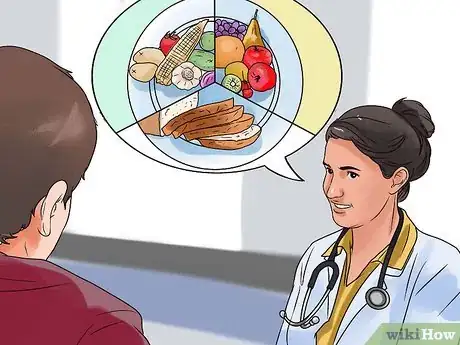
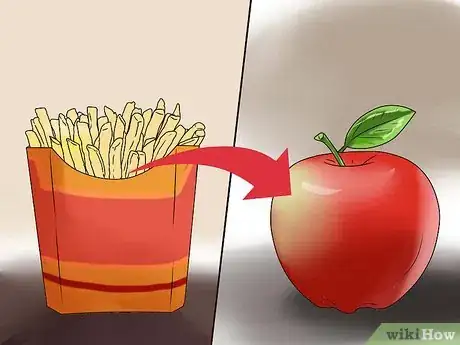

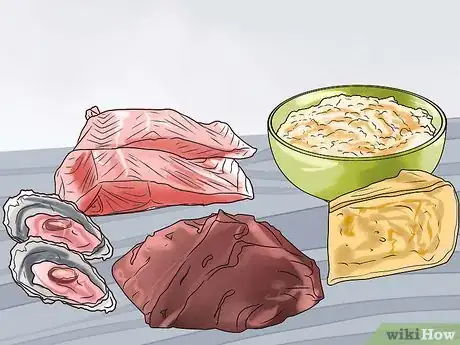

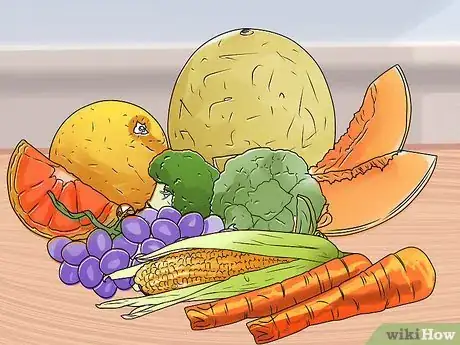



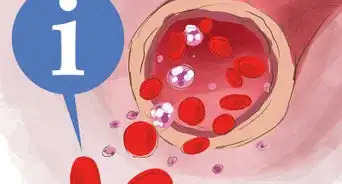

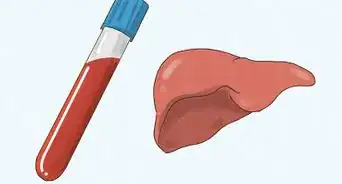

-Step-14-Version-2.webp)



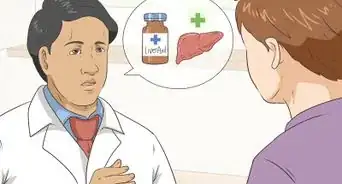
















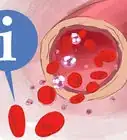




































Medical Disclaimer
The content of this article is not intended to be a substitute for professional medical advice, examination, diagnosis, or treatment. You should always contact your doctor or other qualified healthcare professional before starting, changing, or stopping any kind of health treatment.
Read More...